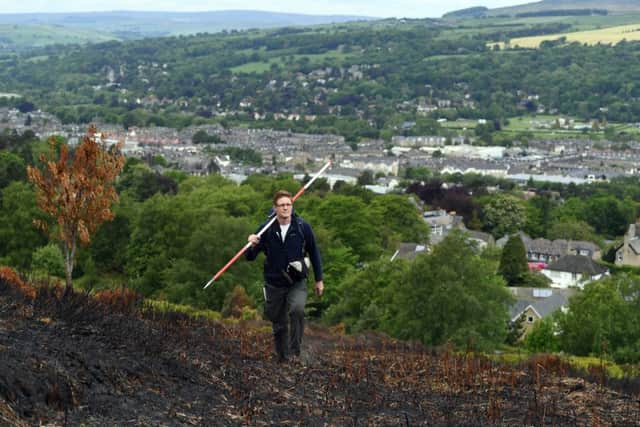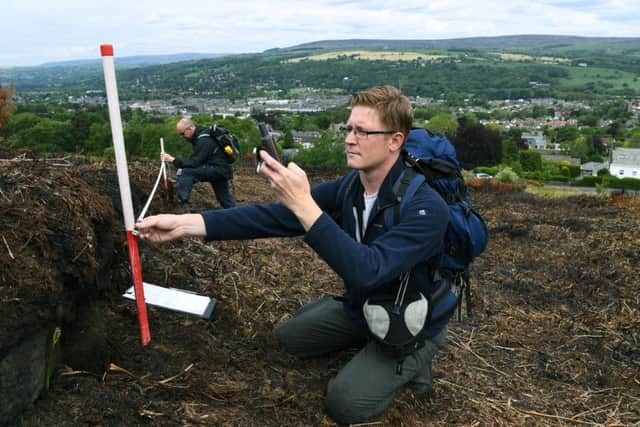How Ilkley Moor became a grave for victims of barbecue blazes
It is an area famously rich in plants and wildlife and an internationally important bird habitat. But in the wake of the wildfire that swept across the moorland on the Easter weekend, and three smaller fires since, it is also a graveyard.
“It’s quite upsetting to walk along these moors and recognise sites where there were ground-nesting birds, just from the shattered eggs that remain,” he said.
Advertisement
Hide AdAdvertisement
Hide Ad“Then you see the remains of various small mammals that haven’t been able to escape the fire. You find them on the tops of rocks – presumably where they thought they were going to be safe from it.”


Mr Atkinson, a heritage officer with the regeneration group, Pennine Prospects, was half-way through a three-day archaeological survey of the parts of Ilkley Moor affected by the spring fires, which are thought to have been started by out-of-control barbecues.
Across the region, more than eight square miles of moorland have been damaged by fire in the last 10 months, prompting an appeal to visitors to be more aware of the risks.
Mr Atkinson said the sights unearthed so far by the survey spoke for themselves.
Advertisement
Hide AdAdvertisement
Hide Ad“I’d like to think they would raise people’s awareness of the dangers. There’s absolutely no reason to take a barbecue on to moorland,” he said.


It took around 100 firefighters to bring the Easter blaze under control. At the same time, another fire was raging on the moors above Marsden, near Huddersfield.
Bradford Council, which owns Ilkley Moor, is currently consulting on banning barbecues from the area, and at least one neighbouring authority have already done so.
Chris Dean, at the Moors for the Future Partnership, a conservation group, said much of the peatland in the Pennines was drier than it ought to be.
Advertisement
Hide AdAdvertisement
Hide Ad“Dry peat will burn. Moorland fires are easily started by people lighting barbecues, campfires and cigarettes. Although they put their fire out, underground peat may have caught alight, which can burn, unseen, for days or weeks before re-emerging to ignite the surface,” he said.
The survey on Ilkley Moor – part of one of the most archaeologically rich areas in Europe, with stone markings carved before the Pyramids were built – has exposed previously unknown sites of historical interest, but has also established that the fire damage may not have ended, Mr Atkinson said.
“The burn-off of the vegetation and in some places the burning of the top layer of peat means they are exposed to the air and the elements, and may be at risk of further erosion. We might find in the next heavy rains that the sediment and materials that were once keeping a dry stone wall together and will be washed out and the wall will collapse.”
The survey has revealed previously unknown field boundaries, from a time when Ilkley Moor was more heavily grazed.
Advertisement
Hide AdAdvertisement
Hide AdRemains of boundary walls, some still 2ft high and possibly from the 17th century, can now be plainly made out, said Mr Atkinson.
“It’s a surprise that you can actually have dry stone walls hidden by just vegetation,” he said. “They don’t appear on the historic maps we have.”